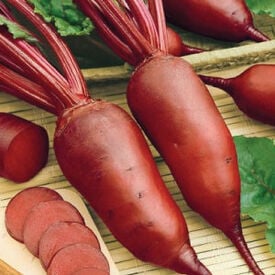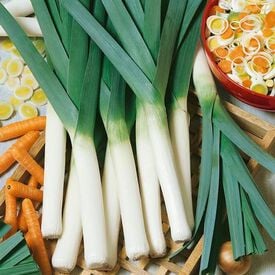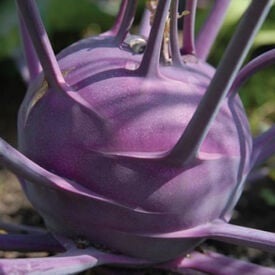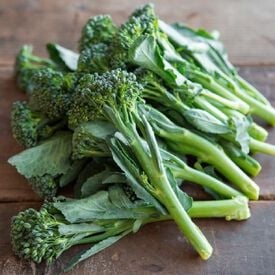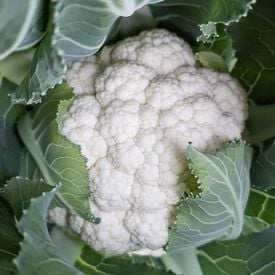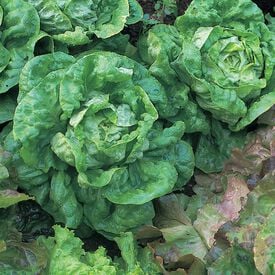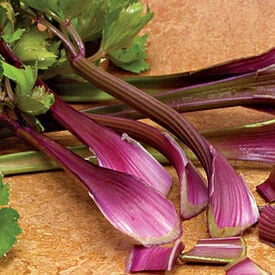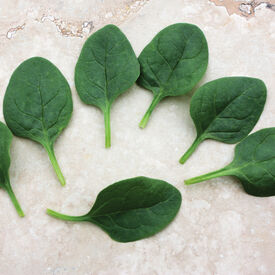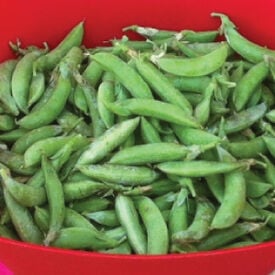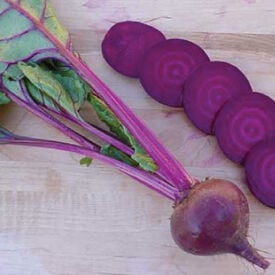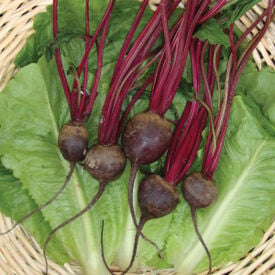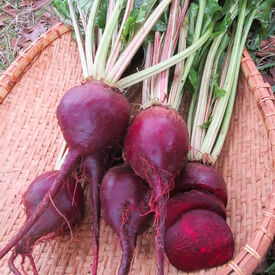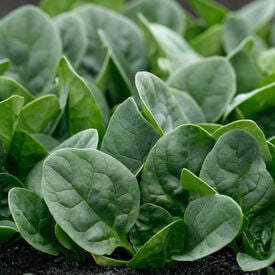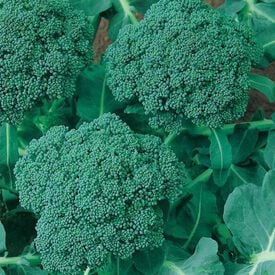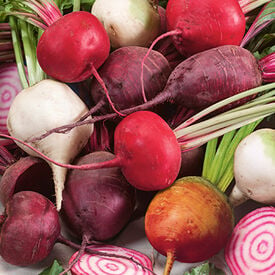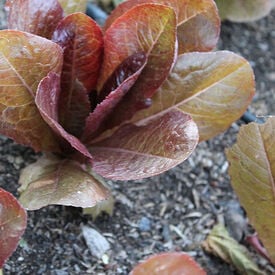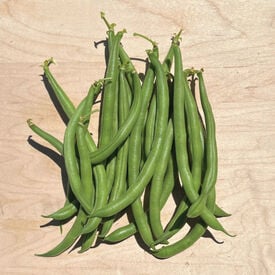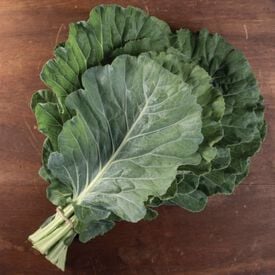Cylindra beets, also known as "Formanova" or "Butter Slicer," are a unique variety of beetroot known for their elongated, cylindrical shape. These beets have a fascinating history, originally hailing from Europe, particularly Denmark, where they were developed in the early 20th century. Their distinctive shape was cultivated to make them easier to slice and can, a practical innovation that has made them popular among home gardeners and commercial growers alike. In terms of taste, cylindra beets are mild and sweet, with a slightly earthy flavor. They are known for their tender, non-fibrous texture, making them excellent candidates for pickling, roasting, or slicing thinly for salads. Their deep red-purple skin contrasts beautifully with the vibrant, dark red flesh inside, adding an attractive element to culinary dishes. Cylindra beets typically grow to be 6-8 inches in length and 2 inches in diameter. They are ready for harvest in approximately 55-65 days from planting, making them a relatively quick-growing beet variety. They thrive in well-drained, loamy soil with full sun exposure. When it comes to disease resistance, cylindra beets tend to be more resistant to common beet diseases like leaf spot and powdery mildew than some other beet varieties. Proper spacing is crucial, with about 2-3 inches between each plant and rows spaced 12-18 inches apart. With the right care and growing conditions, cylindra beets can yield a bountiful crop of these delicious and uniquely-shaped vegetables, making them a favorite among gardeners and chefs.
The hardy American Flag leek is a good variety for both home and market growers. The attractive uniform leek has blue green leaves and white stalks. The American Flag variety has a very nice sweet flavor. This leek can be enjoyed during fall and winter. Certified Organic. Learn more about our organic seeds.
The Purple Vienna Kohlrabi is an early variety that grows to 12" inches high. The pale purple, flattened, globe shaped bulbs are smooth and tender and form above the ground. Purple Vienna's uniquely flavored white flesh tastes the best when its bulbs are 3" in diameter. Sow in the spring to enjoy a successful harvest over a longer period of time.
De Cicco broccoli, known for its exceptional taste, is a popular heirloom variety of broccoli (Brassica oleracea) that hails from Italy. This Italian heirloom has been cultivated for generations, making it a favorite among gardeners and chefs alike. De Cicco broccoli is classified as a compact, semi-dwarf type of broccoli, and it is highly prized for its versatility in the kitchen and its relatively quick maturity. De Cicco broccoli boasts a mild, slightly sweet flavor with a hint of nuttiness. Its tender, dark green florets are surrounded by a profusion of lush leaves. The compact plant typically reaches a height of 18-24 inches, making it suitable for smaller gardens or container growing. De Cicco is known for its relatively short days to maturity, typically taking around 48-65 days from seed sowing to harvest. This broccoli variety is characterized by its vibrant, dark green color, which is indicative of its high nutrient content. De Cicco broccoli exhibits strong disease resistance, particularly against common broccoli ailments like downy mildew and clubroot, which can be a relief for growers. When properly cared for, De Cicco broccoli can yield a bountiful harvest of small to medium-sized heads, often producing side shoots after the main head is harvested. For optimal growth, it's recommended to sow De Cicco broccoli seeds in well-drained soil with full sun exposure. Plant the seeds 1/4 to 1/2 inch deep, spacing them about 18-24 inches apart to provide enough room for the plants to mature and thrive. Additionally, consistent watering and adequate fertilization can help ensure a successful De Cicco broccoli crop.
Snowball Y Improved cauliflower is a popular open pollinated variety! This cauliflower is known for its vigorous, rapid growth and long harvest. Its head is snow-white and measures 7-8" inches across. Give this cauliflower fertile soil, full sun and steady moisture and you'll be rewarded with large, delicious heads that are high in vitamin C.
All The Year Round Lettuce is a medium-sized green headed lettuce that is just like its name, good for all the year round! This slow bolt variety is solid even in hot weather, and good for far northern areas as it is very hardy. Sow All The Year Round in spring or late summer!
The large, red stalks of the Giant Red celery have a wonder flavor, some prefer it over green stalks! The Giant Red celery is a hidden gem. This variety is by far the best tasting celery you can grow! The yellow-pink hearts of the Giant Red are great in salads or soup and it grows great throughout the United States.
Seaside produces very uniform and great tasting baby leaf spinach. Stays baby size for extended period of time extending the season. Seaside has a nice, smooth, thick, very dark green, spade-shaped leaf making it a perfect choice for baby leaf growers. Seaside has great downy mildew resistance.
Sugar Ann is a 1984 All America Selections winner! This snap pea variety has an edible pod that offers earliness, productivity, and a compact growth habit. The crisp, sweet succulent 3 inch pods are ready to eat in just 10 to 14 days ahead of the original Sugar Snap, and remain in prime eating condition for days.
The Ruby Queen is an excellent canning and fresh eating beet! A perfectly round beet that has a smooth buttery texture that is more tender than any other beet. An early maturing beet, 52 days, that grows well in any soil type throughout the country. Ruby Queen can be grown close because they hold their shape well. They can also be grown larger than most beets and still hold good flavor making it a great market beet. An All American Selection winner!
The Detroit Dark Red is the standard all-purpose heirloom beet! This is by far the most popular beet for home gardens. Detroit Dark Red has blood red flesh that is very sweet and tasty. Beets are perfectly round with no rings or streaks. Has 13-16" greens that are wonderful mixed into salads. Very prolific and good keeper. This heirloom was first introduced in 1892 by Mr. Reeves of Ontario, Canada.
The Lutz Green Leaf White Stem Beet is an attractive deep red variety with white stalks that is absolutely delicious when steamed or roasted. This beet is known for having huge glossy, deep green tops that are perfect for salads! This beet is a "winterkeeper" beet that has a long standing storage capability. The Lutz Green Leaf White Stem has 6 inches in diameter roots.
Countryside is a beautiful dark green very uniform baby leaf spinach variety. It has thick smooth round oval leaves. Countryside has good holding ability for baby leaf and it has acceptable bolt tolerance for fresh market growers. Due to its moderate growth habit, it has performed well in many West Coast baby leaf growing slots.
The Green Sprouting Calabrese produces large dark green heads bursting with flavor. This broccoli with is a favorite, that now is available as organic seed! Good in short season areas with cool nights. It will produce many lateral or side shoots over a long season. It is slow bolting with a flavor that can't be beat.
The Rainbow Blend contains a kaleidoscope of orange, purple, red, white and multi-colored beet varieties that will make any dish pop! This colorful variety not only produces the brightest colored beets, but also the tastiest. This blend is a great addition to any garden, especially a container garden. Enjoy this beet blend in a salad, or roasted for a mouthwatering colorful plate.
The Merveille Four Seasons is a French Bibb lettuce type that produces rich deep reddish leaves with bright cranberry red tips. This 12-16 inches lettuce has a wonderful butter taste and will hold its flavor in hot weather. The rich red leaves surround a small, 8-12 inches pale green, tight heart. Enjoy the Merveille Four Seasons chopped up in a salad for fresh flavor and a pop of beautiful color.
Jade bush beans are long, uniform pods that reach 6-7" in length. With slender, deep green pods that burst with delicious flavor. A high yielding bean that doesn't mind stress and offers good disease resistance. Pale green seeds.
Top Bunch 2.0 collard greens are a modern, improved variety known for their exceptional flavor and high-yielding characteristics. This cultivar is a development of traditional collard greens, designed to offer better performance and resilience. Originating from a long history of collard cultivation in the Southern United States, Top Bunch 2.0 features large, dark green leaves with a smooth texture and a robust flavor that balances earthy and slightly peppery notes. It typically matures in about 50 days, allowing for a relatively quick harvest compared to some other varieties. The plants exhibit a compact, upright growth habit, which facilitates harvesting and makes them well-suited for smaller garden spaces or containers. Top Bunch 2.0 collards are also known for their disease resistance and ability to withstand cooler temperatures, making them a reliable choice for extending the growing season. With their rich taste, vibrant color, and ease of cultivation, Top Bunch 2.0 collard greens are a valuable addition to any vegetable garden.
